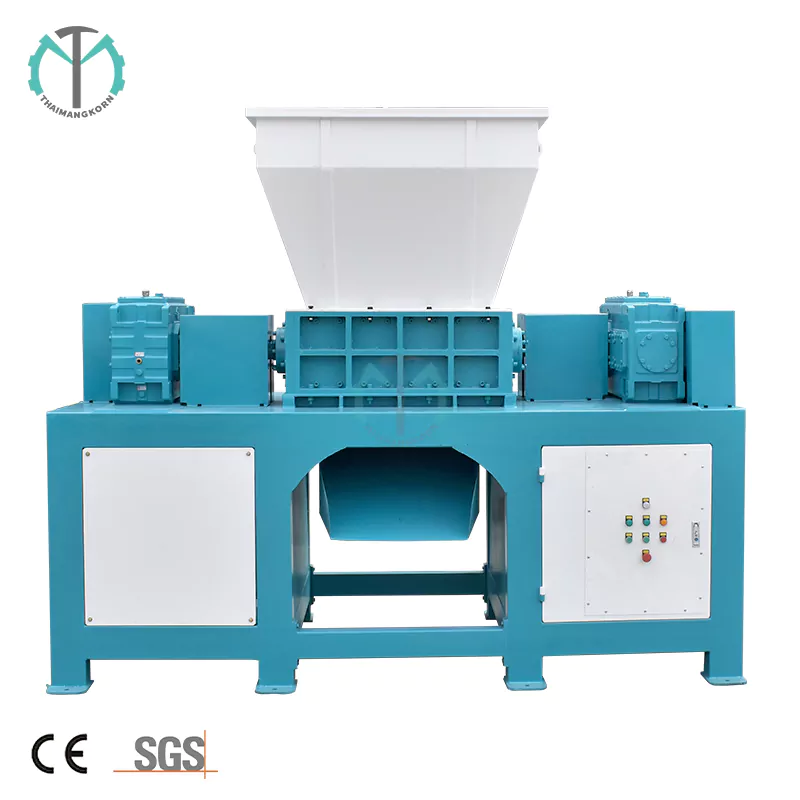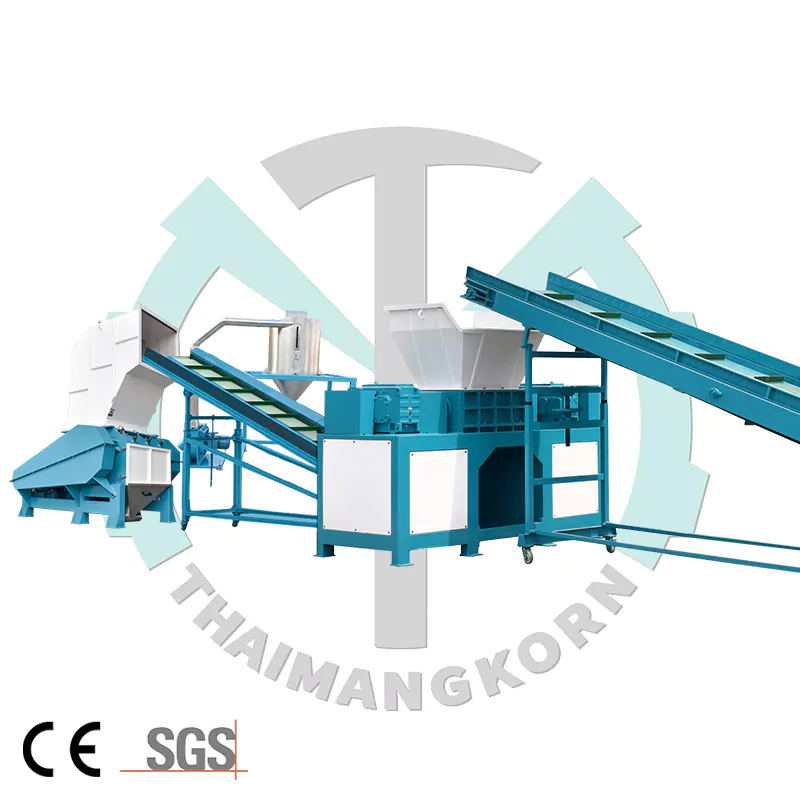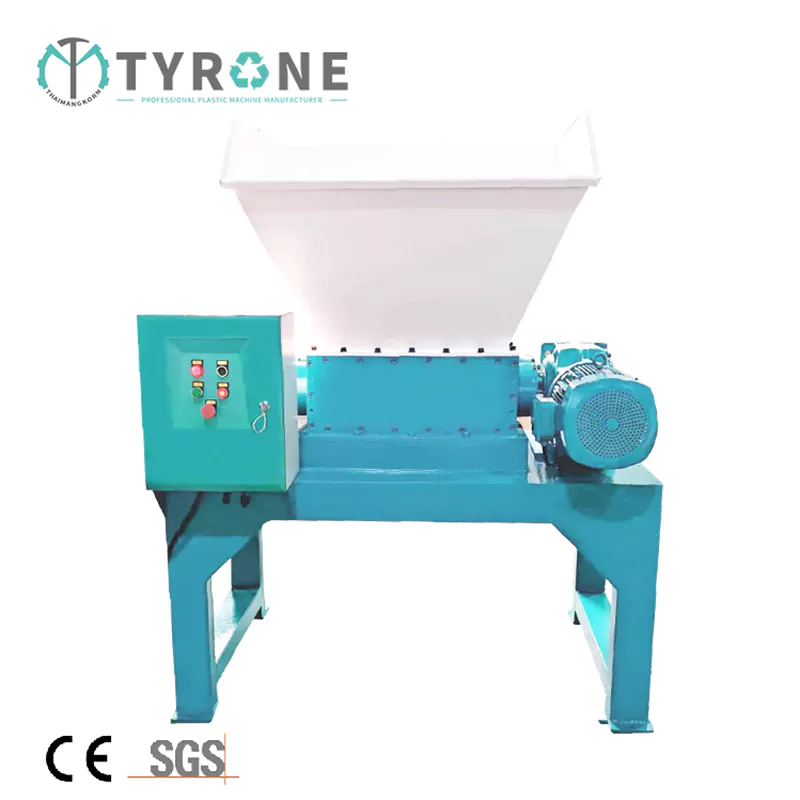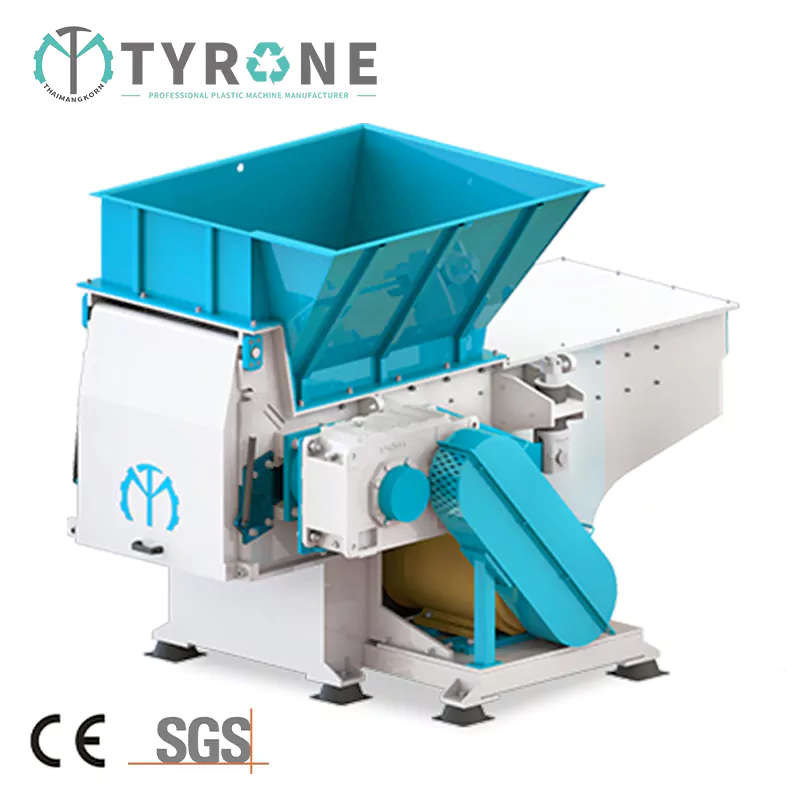Introduction
The global shift from a linear economy to a circular economy marks a significant transformation in how we manage resources and waste. In a linear economy, products are manufactured, used, and then discarded, leading to a continuous stream of waste. This traditional model is unsustainable, especially with the growing concerns about environmental degradation and resource depletion. Conversely, the circular economy aims to create a closed-loop system where products and materials are continuously reused, recycled, and repurposed, minimizing waste and conserving resources.
At the heart of this transition lies the pivotal role of plastic shredders. These machines are essential in converting plastic waste into valuable resources, facilitating the recycling process, and ultimately promoting sustainability. By breaking down plastic waste into manageable pieces, shredders enable the efficient recycling and repurposing of materials, thus playing a crucial role in the circular economy.

The Mechanics of Plastic Shredding
Plastic shredding is a critical process in the recycling chain, involving the use of industrial machines designed to break down various types of plastic waste. One prominent example is the Tyrone single-shaft shredder, a robust machine known for its efficiency and versatility.
The process begins with the collection of plastic waste, which is then fed into the shredder. The Tyrone shredder employs a single rotating shaft equipped with cutting blades that shred the plastic into smaller pieces. These blades are designed to handle different types of plastics, from soft plastics like polyethylene to harder plastics like polycarbonate. The shredded plastic, now reduced to uniform fragments, is easier to handle and process in subsequent recycling stages.
By breaking down plastic waste into smaller, manageable pieces, shredders play a crucial role in preparing the material for further processing. This step is essential for the efficient recycling of plastics, enabling the transformation of waste into valuable raw materials.
Turning Plastic Scrap into Valuable Products
The transformation of shredded plastics into raw materials for new products is a cornerstone of the circular economy. Once plastic waste has been shredded, it can be further processed and repurposed into a wide range of products. This not only reduces the demand for virgin plastics but also minimizes the environmental impact of plastic waste.
Shredded plastics can be melted and molded into new products such as containers, packaging materials, and automotive parts. For example, recycled polyethylene can be used to manufacture durable outdoor furniture, while recycled PET (polyethylene terephthalate) is commonly used to produce new beverage bottles. This process not only diverts plastic waste from landfills but also contributes to the creation of sustainable products.
The benefits of using recycled plastics extend beyond environmental sustainability. Products made from recycled materials often have a smaller carbon footprint compared to those made from virgin plastics. Moreover, the recycling process conserves energy and natural resources, contributing to a more sustainable and resource-efficient economy.
Technological Advancements in Plastic Shredders
The efficiency and effectiveness of plastic shredders have been significantly enhanced by technological advancements. Modern shredders are designed with features that improve their adaptability to different types of plastics and enhance overall recycling operations.
The Tyrone single-shaft shredder, for instance, incorporates several innovative features. Its robust design allows it to handle a variety of plastics, while its adjustable cutting speed ensures optimal performance for different materials. The machine’s cutting blades are made from high-strength steel, ensuring durability and longevity. Additionally, the shredder is equipped with an intelligent control system that monitors and adjusts the shredding process in real-time, maximizing efficiency and minimizing energy consumption.
Technological advancements in shredder design also include improvements in automation and safety. Automated shredders can operate with minimal human intervention, reducing labor costs and improving safety. Features such as overload protection and automatic reverse functions help prevent machine damage and ensure smooth operation.
Furthermore, advancements in data analytics and IoT (Internet of Things) have enabled the development of smart shredding systems. These systems can collect and analyze data on the shredding process, providing insights that can be used to optimize performance and predict maintenance needs. By leveraging these technologies, operators can improve the efficiency and reliability of their shredding operations, further contributing to the goals of the circular economy.

Environmental and Economic Implications
The environmental benefits of reducing plastic waste through effective recycling strategies are substantial. By converting plastic waste into reusable materials, shredders help reduce the volume of waste that ends up in landfills and oceans. This not only mitigates environmental pollution but also conserves natural resources and reduces greenhouse gas emissions associated with plastic production.
One of the key environmental benefits of using plastic shredders is the reduction in the demand for virgin plastics. Producing new plastics from raw materials requires significant amounts of energy and natural resources. By recycling existing plastics, we can reduce the need for new materials, conserve resources and lowering the overall environmental impact of plastic production.
In addition to environmental benefits, the incorporation of shredders into waste management systems has significant economic implications. Recycling plastic waste can result in substantial cost savings for municipalities and businesses by reducing disposal fees and generating revenue from the sale of recycled materials. Furthermore, the recycling industry creates jobs in collection, processing, and manufacturing, contributing to economic growth and development.
The economic impact of plastic shredders extends to various industries. Companies that invest in recycling technologies can enhance their sustainability profiles, meet regulatory requirements, and appeal to environmentally conscious consumers. By integrating shredders into their operations, businesses can achieve cost savings, improve resource efficiency, and contribute to a circular economy.
Case Studies and Industry Applications
Several industries have successfully integrated plastic shredders into their recycling protocols, demonstrating the broader implications for sustainability in manufacturing and waste management.
Case Study 1: The Automotive Industry
In the automotive industry, companies are increasingly using recycled plastics in the production of vehicle components. For example, Ford Motor Company has implemented a recycling program that uses shredded plastics to manufacture parts such as bumpers, dashboards, and interior trim. This initiative not only reduces waste but also supports Ford’s commitment to sustainability and resource efficiency.
The use of recycled plastics in the automotive industry also offers performance benefits. Recycled materials can be engineered to meet specific requirements, such as strength and durability, making them suitable for a wide range of automotive applications. By incorporating recycled plastics into their products, automotive manufacturers can reduce their environmental footprint and contribute to the circular economy.
Case Study 2: The Packaging Industry
The packaging industry is another sector that has embraced plastic shredders. Companies like Nestlé and Unilever have invested in advanced recycling technologies to process plastic waste from their packaging operations. Shredded plastics are recycled into new packaging materials, reducing the demand for virgin plastics and minimizing the environmental impact of packaging waste.
Recycled packaging materials are also gaining popularity among consumers. Eco-conscious shoppers are increasingly seeking out products with sustainable packaging, driving demand for recycled materials. By using shredded plastics to create new packaging, companies can meet consumer expectations while reducing their environmental impact.

Case Study 3: The Construction Industry
In the construction industry, shredded plastics are used to produce materials such as plastic lumber and composite decking. Companies like Trex have pioneered the use of recycled plastics in building materials, offering sustainable alternatives to traditional wood products. These materials are durable, low-maintenance, and environmentally friendly, contributing to the circular economy in the construction sector.
Recycled plastic building materials offer several advantages over traditional materials. They are resistant to rot, insects, and weathering, making them ideal for outdoor applications. Additionally, plastic lumber can be produced in a variety of colors and textures, providing aesthetic flexibility for designers and builders.
Conclusion
The role of plastic shredders in promoting a circular economy cannot be overstated. By converting plastic waste into valuable resources, these machines facilitate the recycling process and support the creation of sustainable products. Technological advancements in shredder design have further enhanced their efficiency and adaptability, making them indispensable in modern waste management systems.
The environmental and economic benefits of incorporating shredders into recycling operations are significant. By reducing plastic waste, conserving resources, and creating jobs, shredders contribute to a more sustainable and resource-efficient economy.
Looking ahead, continued innovation in recycling technology will further advance the circular economy. As industries and communities increasingly adopt sustainable practices, plastic shredders will remain a crucial tool in the quest to transform waste into valuable resources, paving the way for a greener, more sustainable future. By integrating shredders into their operations, businesses and municipalities can play a vital role in the global effort to create a circular economy and protect our planet for future generations.


